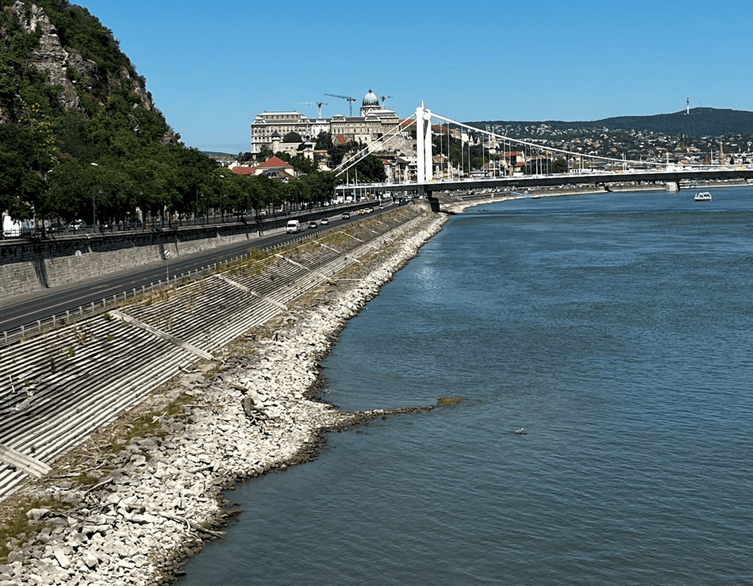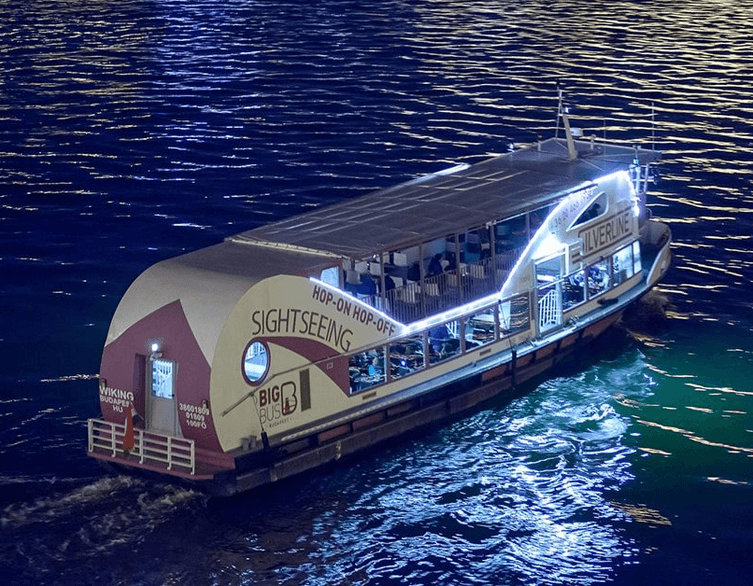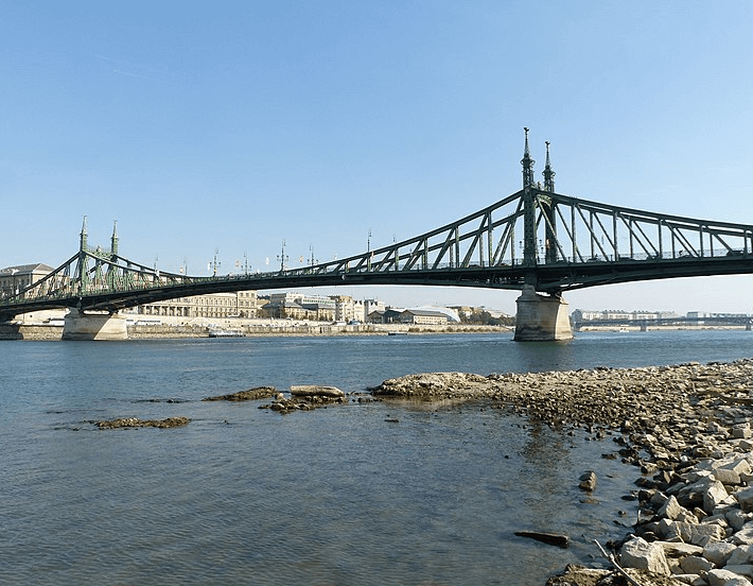Budapest’s Dramatic Warning: The Hunger Rock Emerges from the Danube Again

Budapest residents woke up to an unusual and concerning sight on July 2nd, 2025: the Hunger Rock has once again emerged from the depths of the Danube River. This sandstone outcrop, located at the foot of Gellért Hill near Liberty Bridge, is more than just a natural curiosity – it serves as a serious warning about the capital’s current state.
Understanding the Danube’s Critical Water Levels
The Danube’s water level dropped to 84 centimeters at dawn and further declined to just 79 centimeters by afternoon, making the rock visible once again. This phenomenon occurs only during severe drought conditions, and the rock’s appearance carries historical significance as a harbinger of difficult times ahead.
The emergence of the Hunger Rock represents tangible evidence of climate change’s impact on Budapest. The fact that this rock appeared in March 2025 and now again in July marks an unprecedented frequency – such early appearances in the year haven’t been recorded for 150 years.
Impact on Budapest’s Tourism and River Activities
The extremely low water levels directly affect Budapest’s vibrant tourism industry and recreational activities along the Danube. River navigation routes have become significantly narrower, making maneuvering more challenging for hotel boats and potentially forcing the suspension of several tourist boat services.
The Budapest Police River Division has issued warnings about the increased dangers posed by the low water levels. The main shipping channel has narrowed considerably, leaving little room for larger vessels to maneuver. This situation puts kayakers and stand-up paddleboarders at risk, as there’s less space for avoiding commercial traffic.
Swimming and water sports enthusiasts face particular hazards, as previously safe areas may now conceal rocks, metal debris, or driftwood just below the surface. The police strongly advise against jumping into the water, as what were once considered safe spots could now cause serious, life-threatening injuries.
Economic Consequences for the Capital
The drought’s effects extend far beyond tourism and recreation. Budapest’s economy feels the strain as Danube cargo transport becomes increasingly difficult, complicating the transportation of agricultural products and other goods. The persistent dry weather conditions have intensified pressure on the city’s water supply system, forcing water utilities to reassess Budapest’s water management strategy.
Best deals of Budapest
The city’s cultural and entertainment programs also face challenges. Riverfront festivals, evening light shows, and boat tours – all integral parts of Budapest’s appeal to visitors – risk cancellation or modification if water levels continue to decline. Some sections of the embankment already face dried riverbed conditions, diminishing the tourist experience and potentially deterring visitors.
City Leadership Response and Adaptation Measures
Budapest’s municipal leadership has launched awareness campaigns encouraging residents to conserve water. The city is also investing in alternative water supply solutions, including reservoir construction and modernizing irrigation systems for green spaces.
Cultural programming is adapting to climate change impacts, with more events moving to indoor venues and new “drought-resistant” program types emerging. This shift reflects the city’s recognition that traditional outdoor, water-dependent activities may become increasingly unreliable.
Urban Planning and Infrastructure Challenges
The unpredictable weather patterns and fluctuating Danube water levels introduce new considerations into urban planning. Transportation authorities must pay closer attention to waterfront bicycle path conditions, while the real estate market has begun incorporating “waterfront security” as a factor – considering how close properties are to critically low river sections.
The Budapest Water Works operates in low-water mode when levels drop below 120 centimeters, though current conditions don’t affect water supply services, which continue to function normally. Weather forecasts predict some water level increases in the coming days, though levels are expected to reach only 120 centimeters by next Tuesday.
Historical Significance and Future Implications
The Hunger Rock serves as more than just a geological marker – it represents a historical symbol that has warned generations of Hungarians about challenging times ahead. Its current July appearance indicates this isn’t a temporary anomaly but rather a persistent crisis requiring immediate attention and long-term adaptation strategies.
For Budapest, this situation demands urban adaptation, swift policy responses, and community responsibility. The city must balance maintaining its appeal as a premier European destination while acknowledging and preparing for the realities of climate change.
The rock’s emergence reminds everyone that nature’s power shouldn’t be underestimated, particularly the Danube’s influence on daily life in Budapest. As the city navigates these challenging conditions, residents and visitors alike must exercise increased caution around the river while supporting conservation efforts that will help preserve Budapest’s unique character for future generations.
Related news
Related events




















